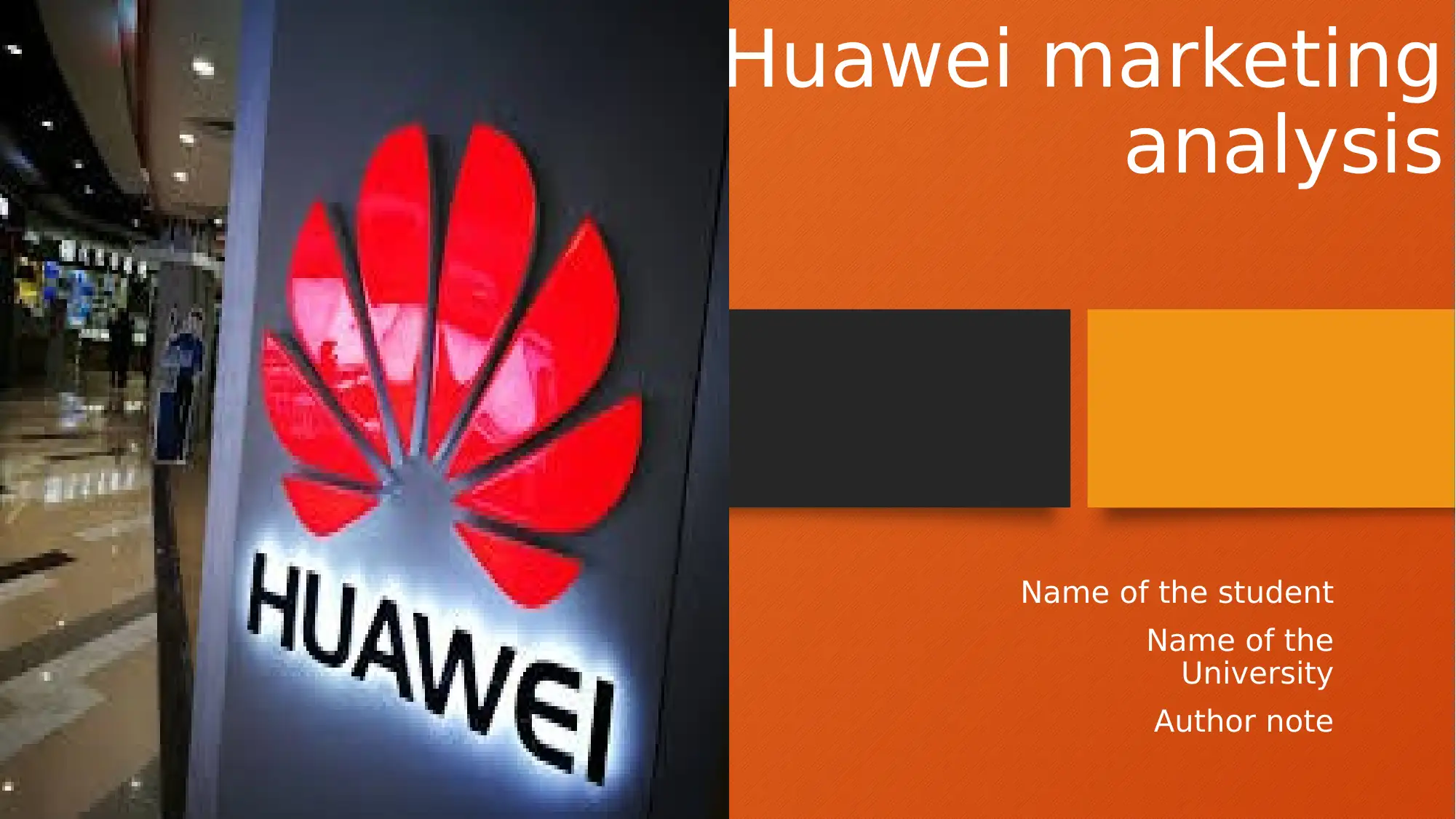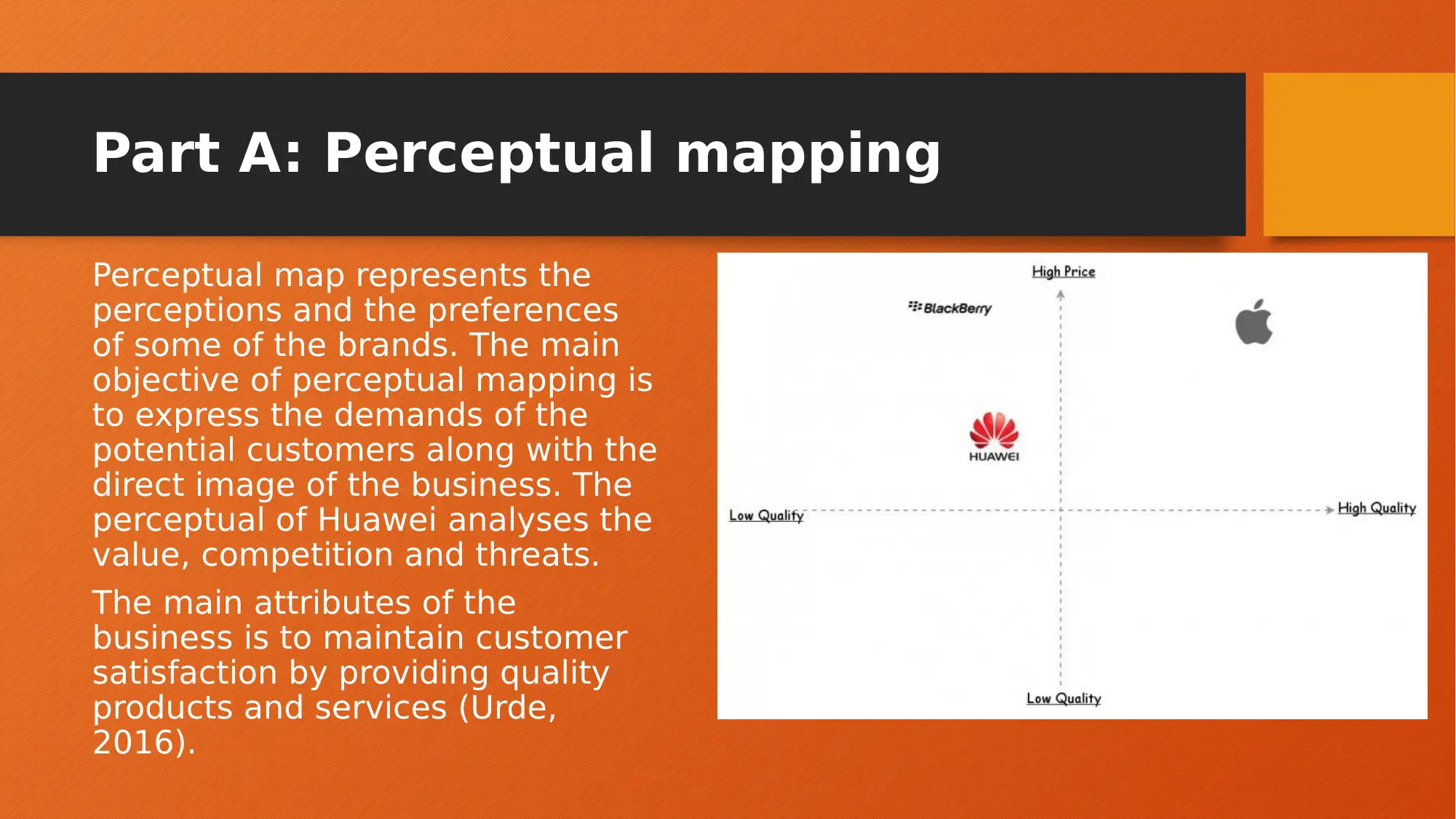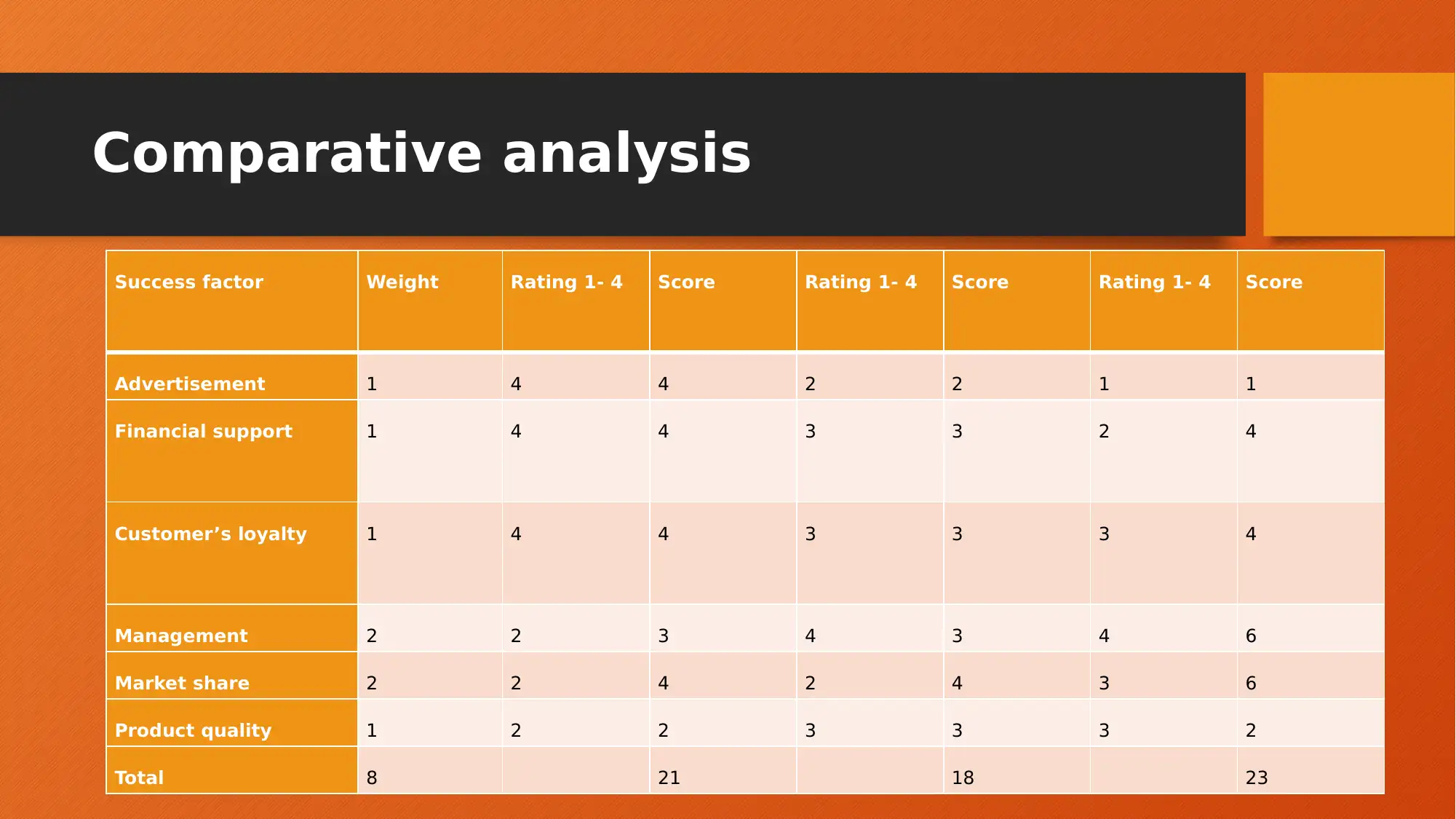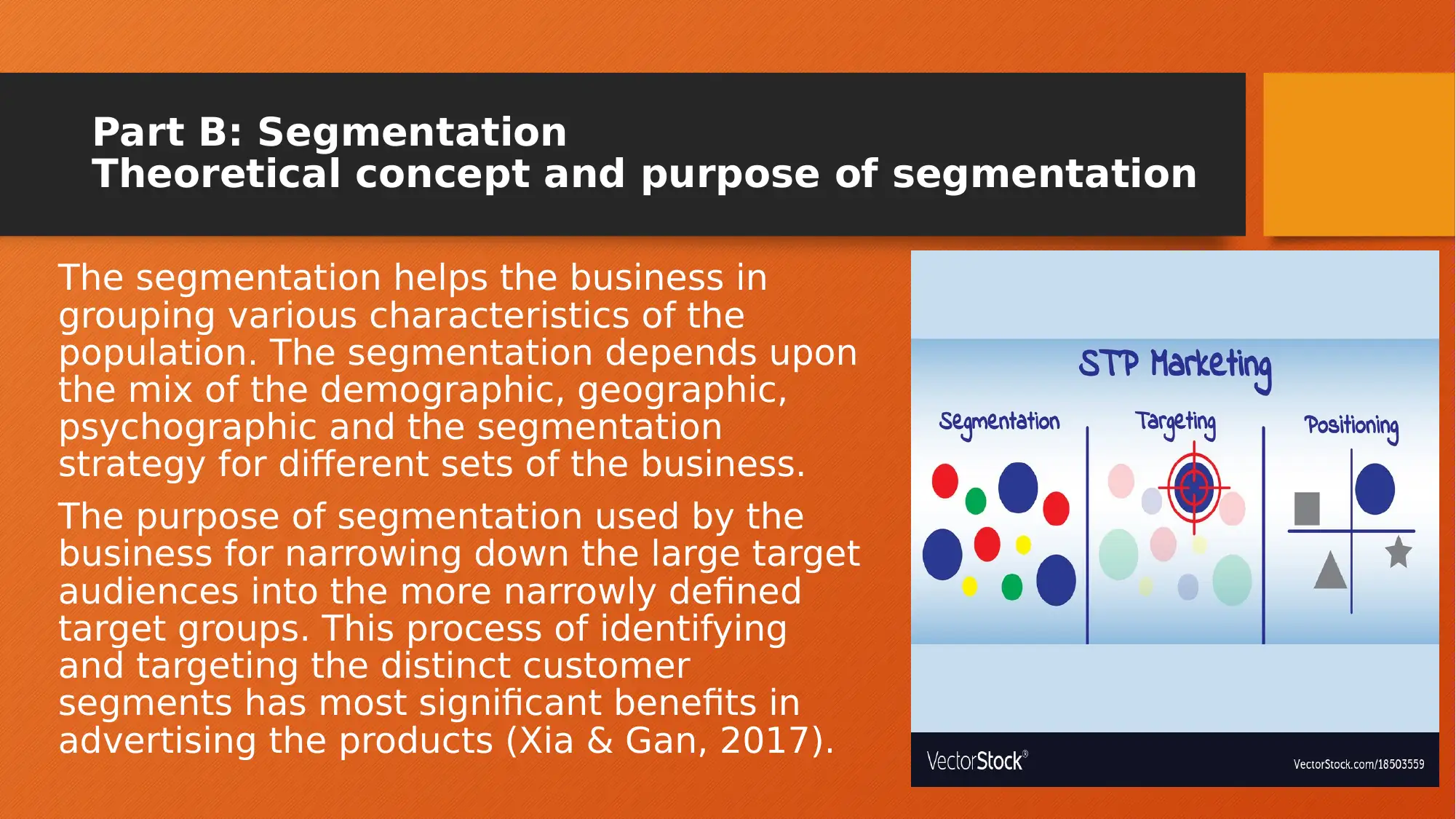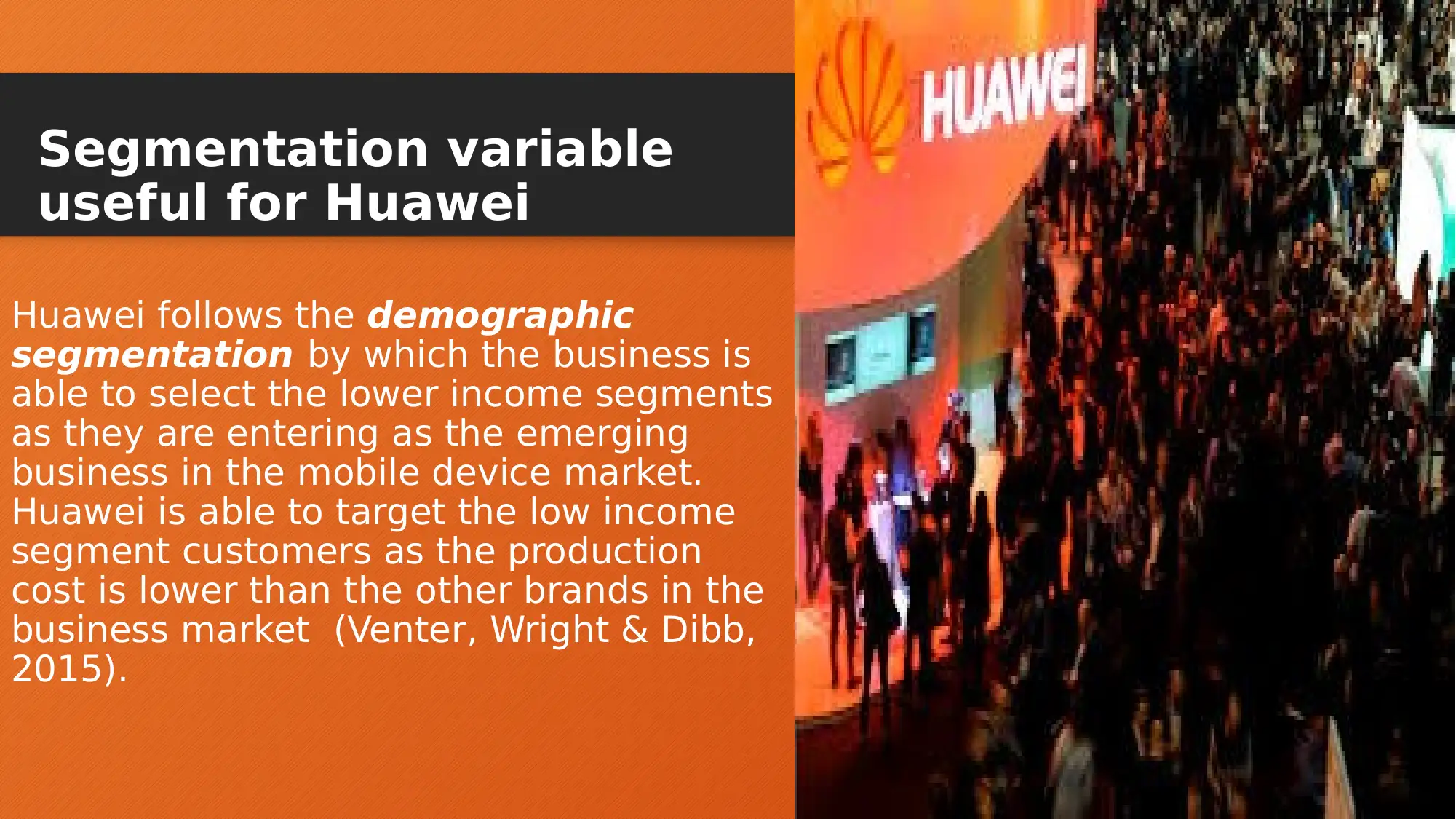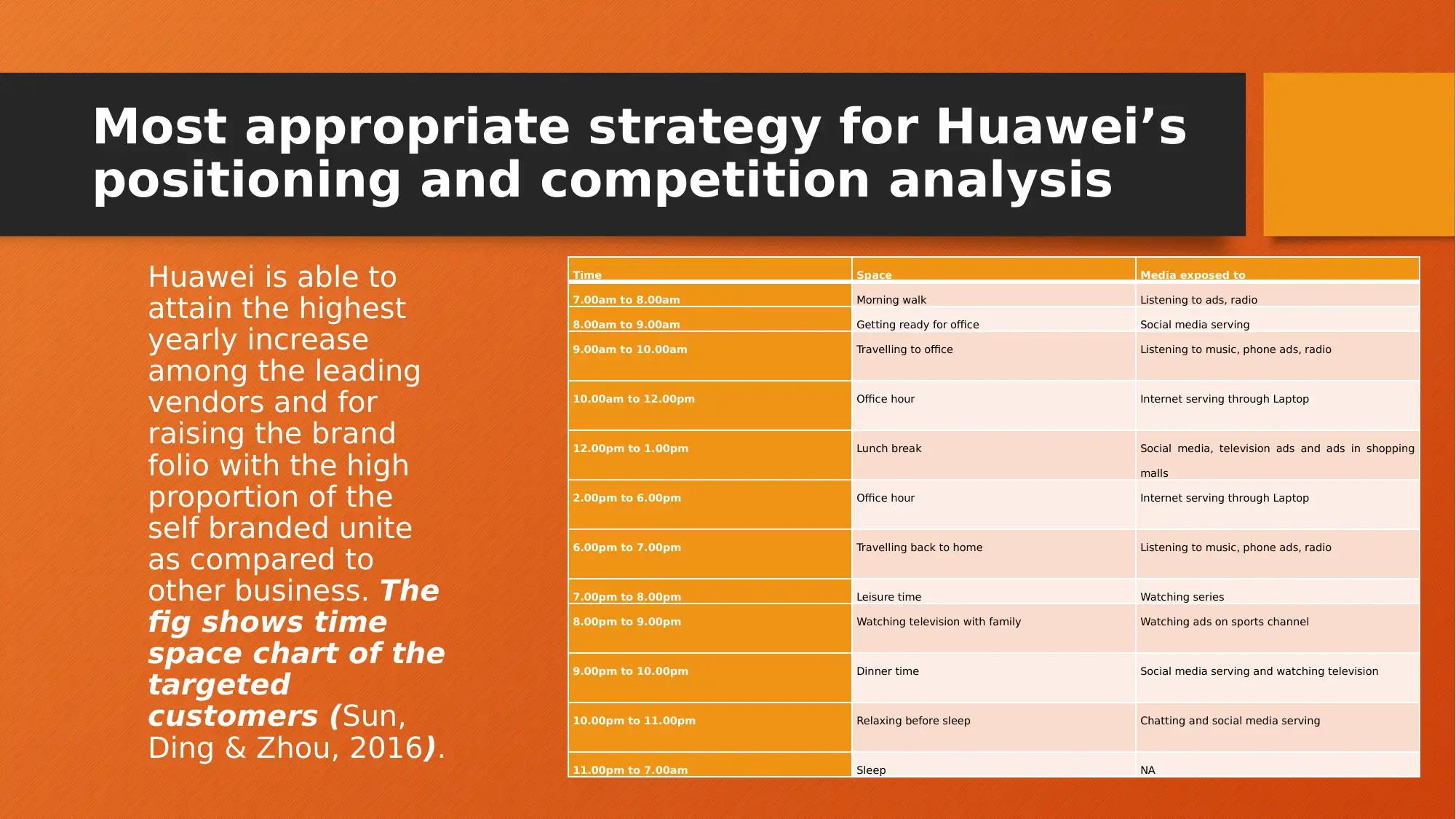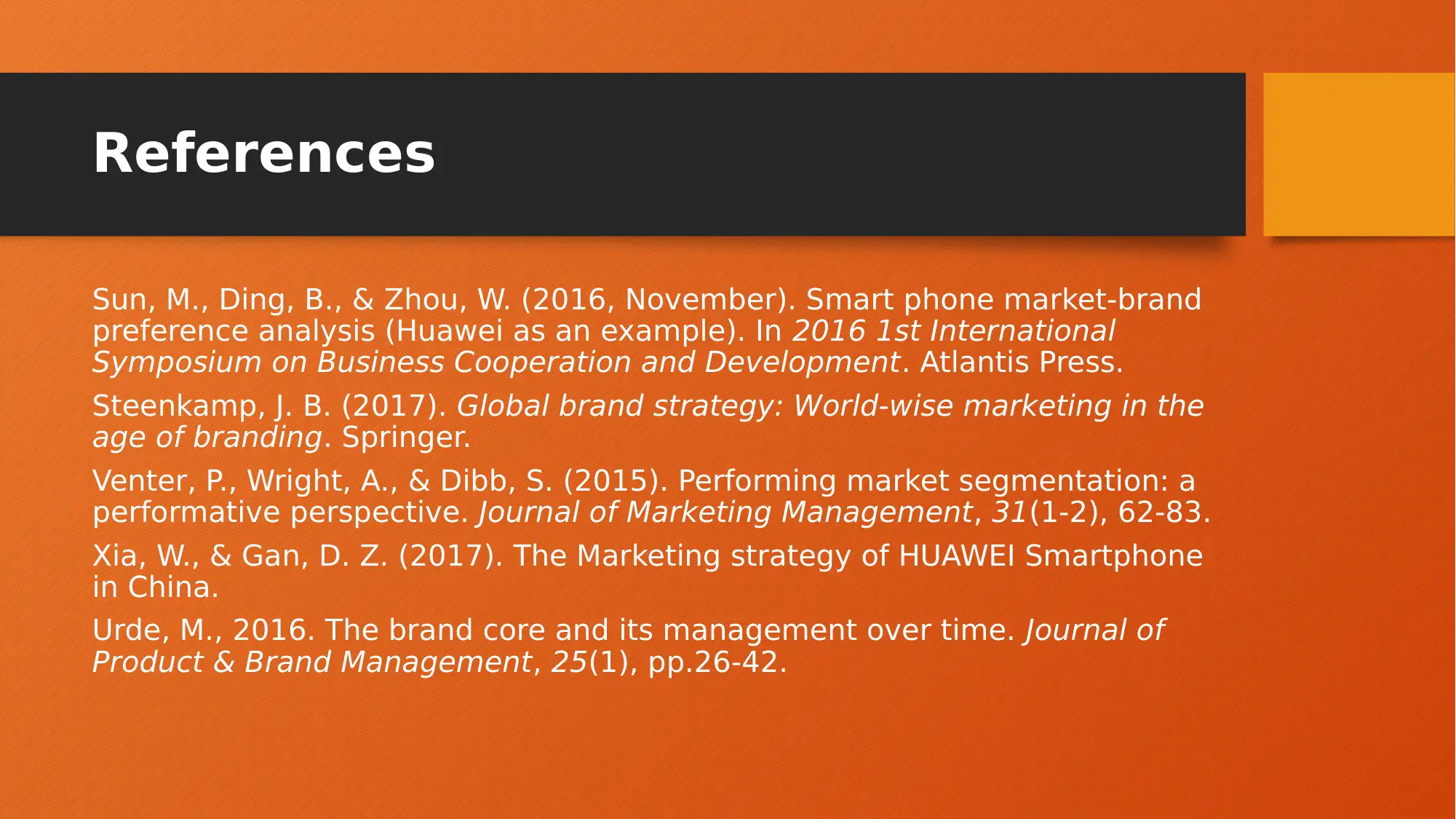Perceptual Mapping and Comparative Analysis of Huawei
VerifiedAdded on 2023/01/18
|10
|980
|53
Presentation
AI Summary
This presentation provides a detailed analysis of Huawei's perceptual mapping, comparative analysis with Apple and Lenovo, segmentation strategy, and targeting strategies for positioning and competition analysis.
Contribute Materials
Your contribution can guide someone’s learning journey. Share your
documents today.
1 out of 10
![[object Object]](/_next/static/media/star-bottom.7253800d.svg)
